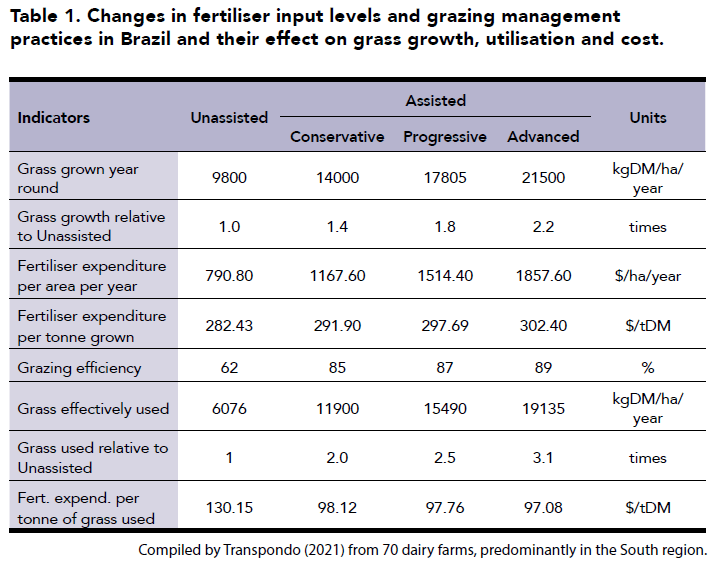Weather challenges hit Brazilian dairy farmers
Extreme weather conditions in Brazil are being brought on by La Niña.

By Wagner Beskow
Since last November, Brazilian farmers have faced a major drought in the South region (temperate climate) and torrential rains followed by floods in the tropical Central and South-eastern regions, brought about by the La Niña weather phenomenon.
Despite the challenges, excessive rain has not yet hampered milk production, but drought has, so far, reduced supply by 15% in the South and is evolving.
Additionally, high input costs since mid-2020 combined with limited farmgate milk prices are putting unprecedented pressure on the country’s dairy farmers. Converting figures from BRL per litre, as payments are made, to NZD per kg milksolids (MS), their average milk price is equivalent to $8.28 and feeding costs alone account for $4.55 per kg MS.
The total cost of producing the equivalent of 1kg MS in Brazil is now $8.76. An estimated 60% of farmers will not make a return on equity this season and about 40% are unlikely to cover their depreciation fully. The best performers, however, had a feeding cost of $2.90 and a total cost of $5.80 per kg MS before drought and flood effects, running intensive grass-based systems.

When margins get tight or even negative, most farmers tend to cut expenses and they usually cut harder on items they spend the most. One of these is fertiliser, with prices more than doubling in the last two years.
To survive, risk-taking farmers have been attempting to increase productivity and scale of production, thus reducing their cost per litre (unit cost) as a consequence instead of worrying about their costs per year. These are represented by a group of “assisted farmers”, shown in Table 1.
Unassisted farmers spend far less on fertiliser per year but produce only 9.8 tonnes drymatter (DM) of grass/ha/year and harvest only 62% of what they grow. In contrast, assisted farmers use more fertiliser, but grow from 14 to 21.5t DM/ha/year and harvest more efficiently what is produced (85-89%).
The net effect of combining adequate fertilisation with good grazing management practices (high animal intake while allowing the return of nutrients and organic matter, preservation of soil structure, and plant regrowth capacity) is a lower, not higher, expenditure of fertiliser per tonne of drymatter effectively used, especially amongst progressive and advanced farmers with technical assistance ($97 as opposed to $130/tDM). Supplements such as maize silage and concentrates are used to balance the diet and allow cows to add extra production on top of that provided by the grass. A common mistake is that the more supplements are relied upon and the more complex is the infrastructure offered to cows, the less rigorous the farm becomes in applying basic grazing management principles and tools, leading to a regress in pasture production and utilisation, thus increasing feeding costs.
This year most farmers will not have maize silage, pastures are overgrazed, soils are deteriorating, and concentrate prices have doubled, so even after rainfall normalises, the scenario will be challenging. To understand how dairy farms are run in Brazil, see Dairy Exporter, Aug. 2020 issue (p.21).
- Wagner Beskow is a senior dairy researcher and farm consultant with Transpondo, Brazil.





